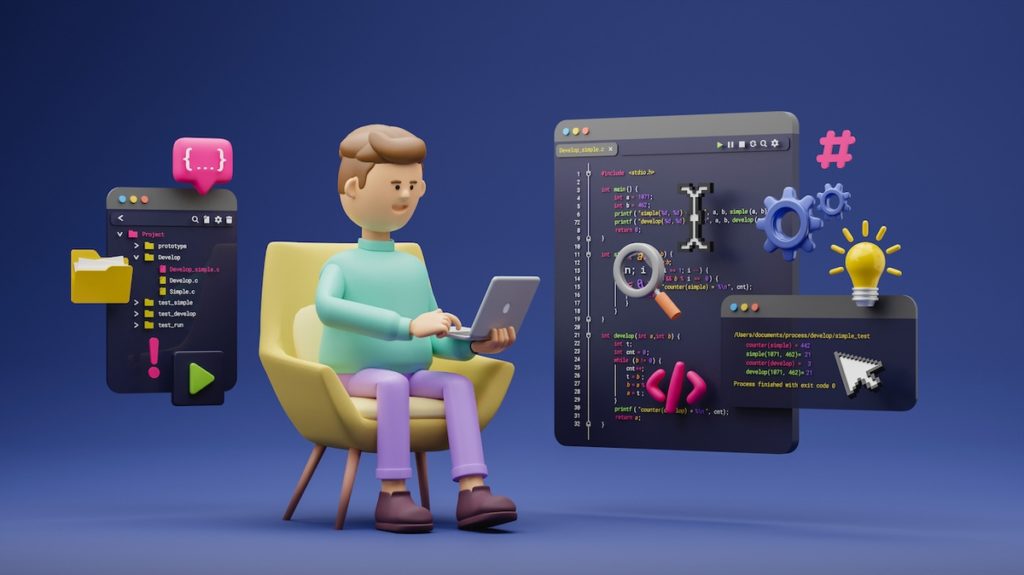Choosing the right Code Editor or IDE as a programmer is a critical decision that can greatly affect your coding efficiency and experience. With an abundance of options, it can be challenging for new programmers to select the best one. To simplify the process, we have compiled a list of the top 5 user-friendly Code Editors and IDEs for programmers.
We have gone ahead to get show you the main differences between IDEs and Code Editors. We have also provided you with a list of factors that you should consider if you are starting out as a newbie, especially in this day and age.
Read More:
What is an IDE?
An Integrated Development Environment is a piece of software that provides software developers with a comprehensive development environment for writing, testing, and debugging code. An integrated development environment (IDE) typically consists of a debugger, a compiler or interpreter, a code editor, and a number of other tools and resources that assist programmers in developing and maintaining software applications.
By providing a centralized workspace where developers can access all the necessary tools and resources in one location, an IDE can simplify the development process. Visual Studio, PyCharm, Eclipse, and Xcode are some well-known IDEs.
Related:
IDEs vs Code Editors
IDEs (Integrated Development Environments) and Code Editors are both tools used by software developers to write, test, and debug code. However, there are some key differences between them:
- Functionality: IDEs provide a more comprehensive development environment, including a code editor, compiler/interpreter, debugger, and other tools and resources. Code editors, on the other hand, are focused mainly on providing a code editor and some basic tools for code management.
- Complexity: IDEs are typically more complex and can be overwhelming for beginner programmers, while code editors are more straightforward and easy to use.
- Project size: IDEs are better suited for large and complex projects, while code editors are more appropriate for smaller projects or quick edits.
- Customization: Code editors are often more customizable than IDEs, with a wide range of plugins and extensions available to add extra features and functionality.
- Performance: Code editors are often faster and lighter than IDEs, which can be slower and more resource-intensive.
Examples of IDEs:
- Visual Studio – A popular IDE for Windows that supports a wide range of programming languages and is commonly used for developing Windows applications, web applications, and mobile apps.
- PyCharm – An IDE specifically designed for Python programming and is popular among data scientists and machine learning developers.
- Eclipse – A widely used cross-platform IDE that supports a large number of programming languages and is popular for Java development.
- Xcode – Apple’s IDE for Mac that is used for developing applications for Apple’s platforms, such as iOS and macOS.
- Android Studio – A popular IDE for developing Android applications, specifically designed for Android development, and comes with features such as a visual layout editor and a flexible build system.
Related:
Examples of Code Editors:
- Sublime Text – A fast, customizable code editor that supports a large number of programming languages and is popular for its performance and ease of use.
- Atom – A free and open-source code editor with a strong community of developers, who have created a large number of plugins and extensions.
- Notepad++ – A popular code editor for Windows that is known for its speed and efficiency, and is often used for editing HTML, CSS, and JavaScript files.
- Vim – A command-line-based code editor that is fast, efficient, and highly customizable, making it popular among experienced programmers.
- Visual Studio Code – A lightweight, cross-platform code editor developed by Microsoft, with a large community of developers and a strong ecosystem of plugins and extensions.
Read More:
Factors to consider when selecting an IDE
When selecting the ideal code editor, it’s important to consider the type of projects you work on, your coding objectives, and your skill level. To make the best choice, consider the following features:
- Efficient performance – The code editor should be fast and suitable for your computer’s specs.
- Editing tools – Look for features such as syntax highlighting, auto-completion, and error and warning markers.
- Navigation – Check for navigation functions such as the ability to jump between code segments, marked functions, and classes, as well as different ways of moving around the editor.
- Code references – Make sure the code editor provides a code base reference to optimize its use.
- Customization – Seek a platform that offers both standard and customized settings for a more personalized experience.
- The type of languages supported also matters a lot when choosing a code editor.
Considering these key factors when choosing the most suitable code editor or IDE to fit your needs.
Conclusion
Ultimately, the choice between an IDE and a code editor depends on the individual needs and preferences of the programmer. For large, complex projects, an IDE may be the better choice, while for small projects or quick edits, a code editor may be more appropriate. Do let us know in the comment section which IDE you are starting with.

